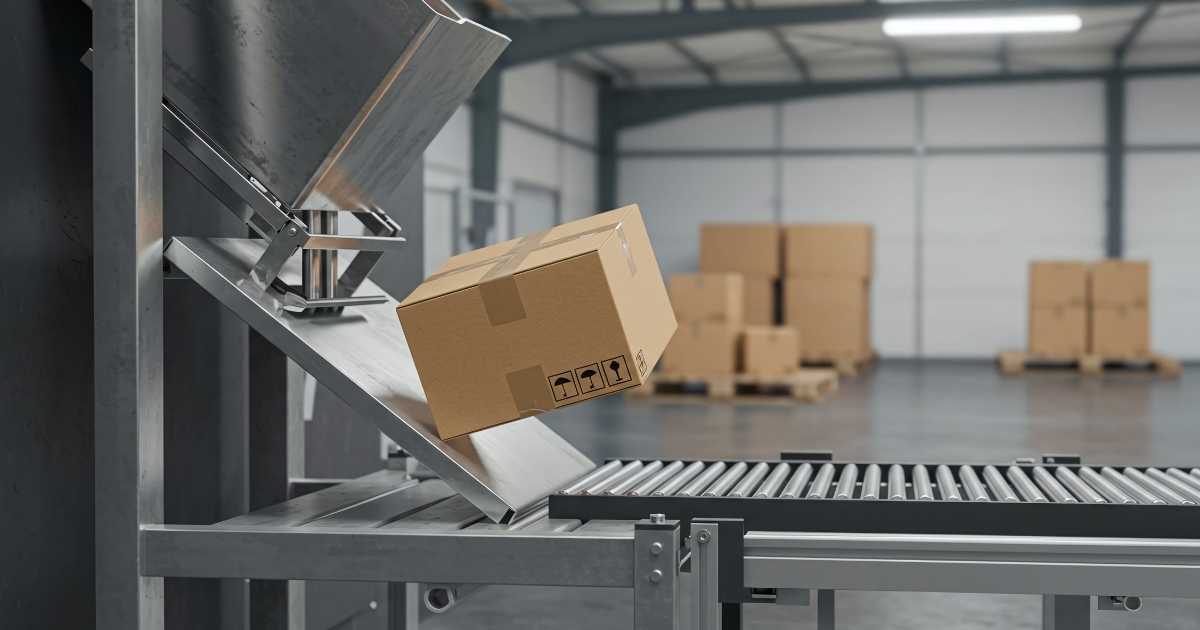Learn to Build a Subscription Box
The subscription box market has transformed how consumers discover and enjoy products. From curated hobby boxes to automated replenishment of daily essentials, this business model offers a unique way to build lasting customer relationships. Creating a successful subscription offering, however, involves more than just putting items in a box. It requires careful planning, strategic execution, and a deep understanding of the customer experience. A strong subscription business model is essential for long-term success, as it enables recurring revenue, customer retention, and efficient operations.
This guide will walk you through everything you need to know to build a subscription box business from the ground up. We will explore everything from initial concept and product sourcing to fulfillment, marketing, and scaling. Before launching, it’s crucial to conduct thorough market research and competitive analysis to validate your idea and understand the landscape. Many successful subscription businesses start with a detailed business plan to guide their strategy and operations. By the end, you’ll have a clear roadmap for launching a subscription service that delights customers and drives sustainable growth.
Why Start a Subscription Box?
The appeal of a subscription box business is strong, driven by the power of monthly recurring revenue. Unlike a one-time sale, a subscription model provides a predictable income stream, making financial forecasting much easier. This stability also enhances customer lifetime value (LTV), as subscribers continue to generate revenue month after month.
The market for subscription boxes continues to show significant growth. Consumer behavior has shifted, with more people embracing the convenience and discovery that a subscription service provides. The maturity of eCommerce and the strength of direct-to-consumer (DTC) channels have created the perfect environment for this business model to thrive.
There are several types of subscription boxes to consider. Curation boxes deliver a hand-picked collection of unique items based on a theme, like gourmet snacks or beauty products. Replenishment models, often called "subscribe and save," automatically send essentials like coffee or vitamins. Access-based subscriptions offer members-only perks or content. Knowing the difference is key to finding your place in the market.
While the opportunities are vast, it's important to be aware of the common challenges. Customer churn, or the rate at which subscribers cancel, is a constant factor you'll need to manage. Inventory can be unpredictable, and managing shipping costs is a critical part of maintaining profitability for your subscription business.
Planning Your Own Subscription Box Business: Concept, Niche & Product Selection

A successful subscription business starts with a solid plan. The first step is identifying your niche and target audience. Who are you serving? What are their passions, problems, or needs? A well-defined niche, such as vegan snacks for athletes or eco-friendly cleaning supplies for families, helps you stand out in a crowded market.
Next, decide on the type of subscription offering you will provide. Will you curate a delightful collection of surprise items each month? Or will you focus on the utility of replenishment subscriptions, making your customers' lives easier? You could also create themed boxes that cater to specific events or interests, offering a unique experience with each delivery.
Product sourcing is a critical component. You can establish partnerships with brands to feature their products, which can be a great way to get started. Alternatively, you might choose to resell wholesale items or even develop your own private label products. Each approach has different implications for your margins and operational complexity.
Your pricing strategy must account for all your costs. Calculate your cost per box, including the products, packaging, and any inserts. From there, determine your desired profit margin. Remember to factor in shipping costs, which can vary significantly. Consider offering subscription tiers to provide customers with different levels of value at different price points.
Before launching, create a sample box or prototype. This allows you to test product combinations and see how they look together. It’s also your chance to get packaging mockups made. This physical prototype makes your subscription box business feel real and helps you gather early feedback before you invest heavily.
Designing the Subscription Experience

The subscription experience goes far beyond the products inside. Your branding and the unboxing experience are your first opportunities to make a memorable impression. High-quality, thoughtfully designed packaging, personalized inserts, and a cohesive brand story turn a simple delivery into a special event for your customer. Creating a custom box not only elevates the unboxing experience but also helps attract a loyal subscriber base by reinforcing your brand identity and making each delivery feel exclusive.
You must decide on the frequency of your subscription service. Will you deliver monthly, bi-monthly, or quarterly? This decision impacts your logistics, inventory planning, and customer expectations. A monthly box creates a regular touchpoint, while a quarterly box allows for higher-value items and more intricate curation.
The right technology is crucial for managing a subscription model. You’ll need a platform that handles recurring payments and billing, subscription management, and provides a customer portal where subscribers can manage their own accounts. Seamless technology prevents headaches like failed payments and difficult cancellation processes, which are major sources of customer frustration.
Building a successful subscription business depends on retention. Implement strategies to keep your subscribers engaged from day one. Keeping customers engaged through personalized experiences and ongoing communication is essential for building loyal customers and ensuring the long-term success of your subscription business. A strong onboarding process, surprise-and-delight elements in your boxes, and actively seeking customer feedback are all powerful tools. Offering incentives for renewals or long-term commitments can also significantly reduce churn.
Fulfillment & Logistics for Subscription Boxes
Efficient fulfillment is the operational backbone of your subscription box service. It starts with accurate inventory forecasting and management. You need to order enough products to fulfill all your subscriptions without ending up with costly excess stock. This balance is key to protecting your margins.
The packing and kitting process is where your box comes to life. This involves assembling all the individual items for each subscriber’s order. Establishing strict quality checks during this stage ensures every customer receives a perfect box. For growing businesses, packaging automation can speed up this process and reduce labor costs.
Choosing the right shipping carriers is a balancing act between speed, cost, and reliability. You need a shipping strategy that gets boxes to customers on time and in good condition without eating into your profits. Exploring different carriers and service levels is essential for optimizing your logistics.
You also need a plan for reverse logistics, or returns. While you hope every customer loves their box, you must have a clear and simple process for handling returns or exchanges. A smooth returns process can actually strengthen customer loyalty.
Many subscription box business models rely on a third-party logistics (3PL) partner like a2b Fulfillment. A 3PL can manage your inventory, kitting, packing, and shipping. This partnership brings expertise and efficiency, allowing you to focus on growing your brand, knowing the complex logistics are handled by experts.
Operations & Scaling
As your subscription box business grows, you'll need to focus on operations and scaling. This begins with closely managing your costs. Keep a watchful eye on all expenses, including overhead, packaging materials, shipping rates, and storage fees. Small cost-saving measures can have a big impact on your overall profitability.
Workflow automation is your best friend as you scale. Implementing software that automates order processing can save immense amounts of time and reduce errors. A robust warehouse management system (WMS) and software integrations between your eCommerce platform and other tools create a seamless operational flow.
Scaling a subscription service from a small pilot to a large customer base presents challenges. The key is to grow sustainably without sacrificing quality or profitability. Ensure your processes and fulfillment capabilities can handle increased volume before you aggressively pursue new customers.
Monitoring your Key Performance Indicators (KPIs) is non-negotiable. Track metrics like customer lifetime value (LTV), churn rate, cost of goods sold (COGS), average shipping times, and order accuracy. This data provides critical insights into the health of your subscription business and highlights areas for improvement.
Marketing & Customer Acquisition for Subscription Boxes
Your marketing efforts should begin long before your first box ships. Pre-launch strategies are vital for building momentum. Start by building an email list of interested potential customers. You can create a landing page that teases your subscription offering and captures email addresses. Launching with an exclusive early-access offer for this list can secure your first wave of subscribers.
Promote your subscription box across multiple marketing channels. Social media is perfect for visual storytelling and building a community around your brand. Influencer marketing can also be highly effective, as influencers can showcase the unboxing experience to their dedicated followers. Content marketing, such as blogging and paid advertising campaigns, is also a powerful tool for reaching your target audience.
Encourage customers to become your biggest advocates. Referral programs that reward subscribers for bringing in new customers can be a cost-effective acquisition channel. User-generated content (UGC), especially unboxing videos and photos, provides authentic social proof that can drive significant awareness and interest in your subscription model.
Finally, balance your efforts between acquiring new customers and retaining your existing ones. It is almost always more expensive to win a new customer than to keep one you already have. Use renewal reminders, loyalty programs, and exclusive perks to show your current subscribers you value them. Communicate regularly with existing customers to optimize your subscription program and manage subscription costs effectively. A happy, loyal customer base is the foundation of a successful subscription business.
What are Common Mistakes When Starting a Subscription Service?
Many new entrepreneurs make avoidable mistakes when launching their first subscription box. One of the most common is underestimating shipping and fulfillment costs. These expenses can quickly erode your margins if not calculated and planned for properly.
- Poor packaging and presentation are another pitfall. The unboxing experience is a core part of the value proposition, and a flimsy box or messy interior can leave customers feeling disappointed and unlikely to continue their subscription.
- Choosing a weak subscription platform can also doom a business. If customers experience billing issues or find it difficult to pause or cancel their subscription, they will lose trust in your brand. A seamless and user-friendly system is essential.
- Many businesses also make the mistake of neglecting customer feedback and retention strategies until it's too late. By the time you notice high churn rates, you may have already lost a significant number of customers. Focus on retention from day one.
Finally, avoid the temptation of overexpansion before your processes and logistics are ready. Scaling too quickly can lead to shipping delays, quality control issues, and customer service nightmares that can permanently damage your brand's reputation.
Building a subscription box is a journey that blends creativity with operational precision. By focusing on a strong concept, a memorable customer experience, and efficient logistics, you can create a thriving subscription business.
Ready to launch or grow your subscription box in beauty, CPG, pet, or wellness? Whether you offer curated skin care, everyday essentials, pet treats, or wellness products, a2b Fulfillment has the expertise to support your unique needs.
Choose your industry to explore tailored solutions:
- Beauty Brands: Get Beauty Subscription Fulfillment Support
- CPG Brands: Optimize Your CPG Subscription Logistics
- Pet Brands: Scale Your Pet Box Operations
- Wellness Brands: Streamline Wellness Subscription Boxes
About a2b

Connect with us today to see how our industry-specific fulfillment solutions can streamline your operations, impress your subscribers, and help your business excel in these fast-growing markets.






